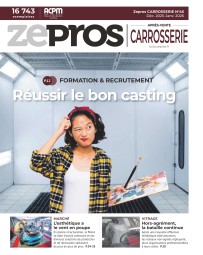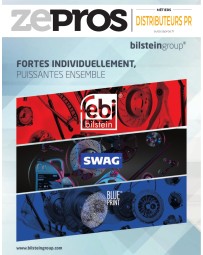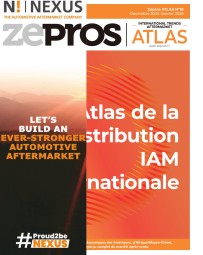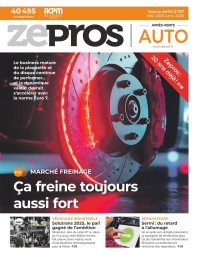
“There’s an ongoing evolution towards consolidation in IAM”
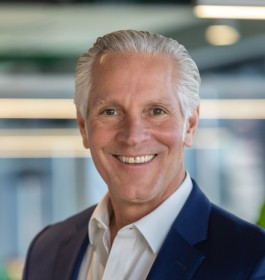
According to Axalta, the refinish market does well across the globe after the turbulent pandemic years. Consolidation carries on in the developed markets.
For us, the two most dynamic regions in 2023 are EMEA and Latin America. We experienced an increase in body shop activity and a significant increase in opportunities in these two markets. The North American market was steady but is also more mature from an industry perspective. Therefore, North America’s growth is more modest than geographies like EMEA and Latin America.
Since the acquisition of FinisMaster in the US, LKQ has become our largest Global distributor. We not only work with LKQ in North America, but also the UK, the Netherlands, Belgium and Germany. The next largest global partner would be Genuine Parts Company (GPC). We partner with GPC under the NAPA brand in North America. In Europe, we work with AAG (Alliance Automotive Group), which is now a GPC owned entity. Specific to the US market, our partners at NCS (National Coatings & Supplies) continue to grow their company and outpace the market. In EMEA, and more specifically the Middle East, we have a longtime partnership with Comet & Progress in Israel. We have expanded our partnerships in Africa,
especially South Africa, with Autoboys. From there, our global market becomes fragmented with thousands of partners running smaller organizations. Although these partners are more local in nature, they are equally valued distributors and critical to our business.
The paint supply specialist is a reality everywhere. The move by LKQ to acquire FinishMaster is a statement about its interest in the market for specialists and its view of the global Refinish industry. The difference is how customers are segmented. We break the market into three different customer segments: first, Premium Strategic Segment, which is made up of very large collision repairers and multi-shop operators. Next is the Traditional Segment, typically single location family-owned businesses that employ 10 to 15 technicians. Finally, the Value Segment comprised of very small operators that might paint two or three cars per week. We have found that these three segments exist consistently in every region.
There’s an ongoing evolution towards consolidation in IAM. The US market has led the way and is now a significantly consolidated market. For example, FinishMaster grew its enterprise over decades by buying independent distributors and managing to expand its footprint to over 200 locations before being acquired by LKQ in 2023.
Body shops will globally continue to consolidate. There’s a benefit for the insurance providers to deal with one entity rather than multiple entities. One of our largest customers in the UK, for example, has doubled in size in the last two years. In the Asia-Pacific region, Australia has been a consolidated market for many years, and it will likely remain that way.
I do think it’s consistent. In the strategic segment, these players demand innovation that gives productivity and efficiency to drive their business. But in the value segment, they might paint two to three cars a week and they want to buy from local stores. One end of the spectrum wants high-end products that enhance their profitability, and the other end wants local sourcing.
This is where Europe becomes very interesting to me. If you think about consolidation, the US leads the way. When you think about efforts to drive efficiency, reduce carbon footprint and digitalization, I would argue that Europe leads the way. In Europe or parts of China, there’s a difference in the priorities of the various players. One region may be more focused on increasing scale versus another region focuses on increasing innovation.
Since the launch of Axalta Irus Mix in Amsterdam, Netherlands, in May 2023, there has been a lot of excitement and demand. We have to be smart about the distribution and the training to match the demand – because we will meet that demand. In North America, we launched Axalta Irus Mix at the SEMA Show in November, and the excitement has spread in the US very quickly. Our Senior Vice President of the Global Refinish Business, Troy Weaver, said that Axalta plans to complete the plans to distribute Axalta Irus Mix in the US in 2024. To launch it globally, we have to build filling production of our recycled plastic bottles in regions outside of EMEA. Once we get that capacity, we will really see a global launch.
We see market growth in every region, even in EMEA and North America, in 2024 and 2025. But after that, from 2026 to 2030, we’ll start to see a flattening of the market in the developed markets because of AI and automation. There will be less product used because of the consolidation, because the body shops will have mastered the solutions for better productivity and will consume less for every repaired car. In the other two regions, Latin America and Asia-Pacific, however, the value of the market will continue to grow strong. If you know that’s going to happen in North America or in EMEA, you can consider expanding your market to other businesses. We must broaden our activities and markets. We must look more specifically at what segments are growing. We made the acquisition of U-POL in the UK two years ago, which fits this strategy. We have to search for adjacencies, find the right fit and bring them into our company while learning from them.
Retrouvez la version française de l'interview ici : « L’IAM poursuit sa concentration de façon soutenue »
